The story of Rosa’s Footprint – by author Jo Earlam
Rosa’s story starts in the present day, with a young paddle-boarder Colin, stepping on to the beach below towering red sandstone cliffs, near Sidmouth.
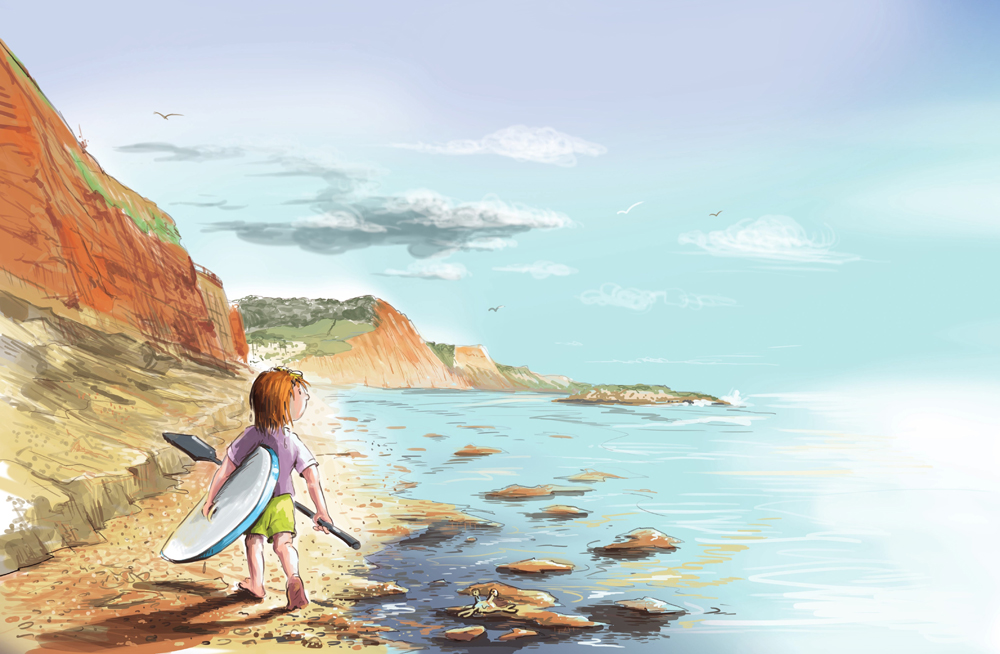
Turning the page, the geological time clock reverts to 240 million years earlier, an age when large crocodile-like, pre-dinosaur reptiles called rauisuchians roamed in the same spot, on what was then land-locked central Pangea.
Rosa is a young rauisuchian, walking with her father Reggie to see a scenic spot he used to visit with his grandfather. Because of rising temperatures, the land has dried up, become desert-like, with swampy mud where clear pools of water should be. Other beasts have stripped the foliage away from trees and left behind half-chewed bones of smaller creatures.
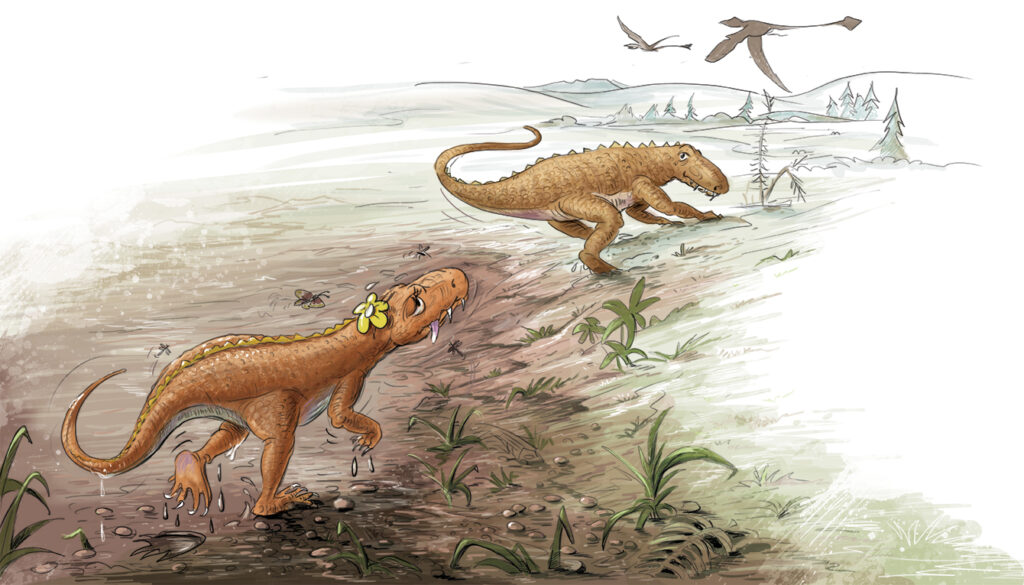
Rosa is distressed, saying: “It looks as if someone’s had a party, made a big mess and left nothing for anyone else.”
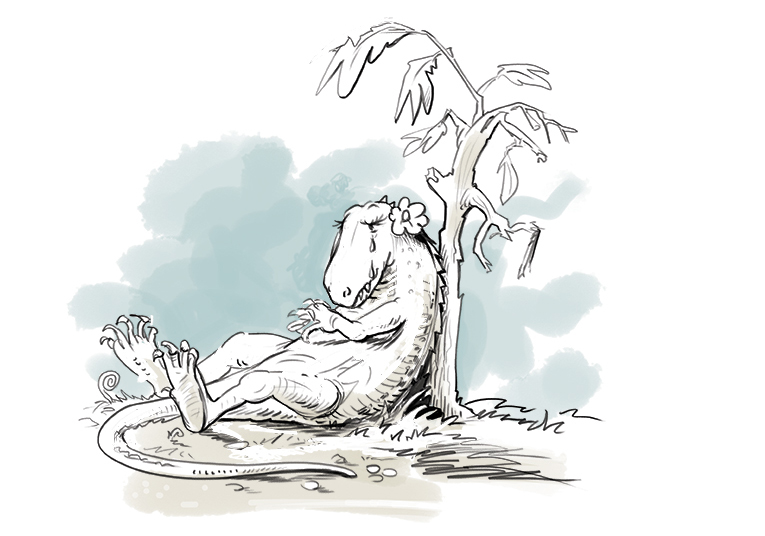
Her father consoles her that she does not have to treat the natural world with disrespect just because others do. When she’s tired, he tells her to put her feet where his have been to help her keep up more easily.
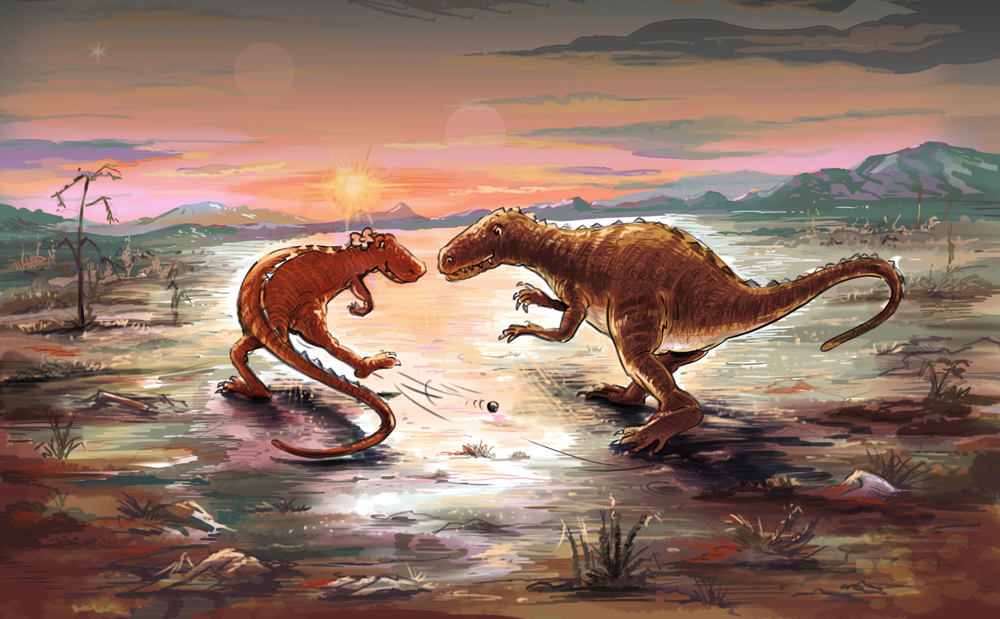
As she focuses on the footprints, the impact they leave as they walk, Rosa realises that by treading carefully plants can grow and continue to provide food, shade, and shelter. She leaves a footprint deliberately in a meaningful way, as a mark of protection and for others to… TH!NK Footprint.
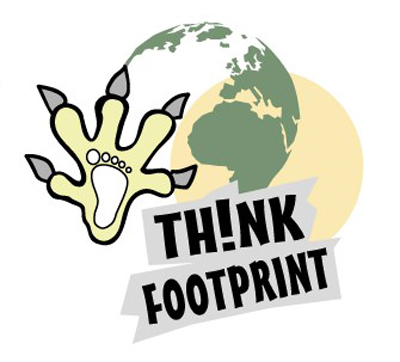
Back in the present day, Colin is dismayed by the remains of a barbecue and rubbish that’s been left on the beach. Sorting through the mess, and reaching the red sandstone rock, he is amazed to find a footprint with sharp pointy claws at the end of five distinctive toes, a connection to the past of the incredible Jurassic Coast. He picks up the bag of litter and walks away deep in thought.
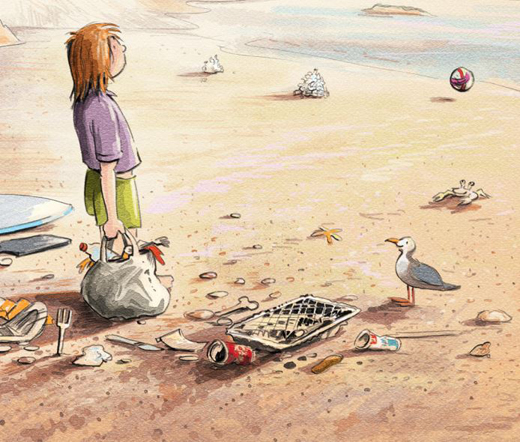
The idea for ‘Rosa’s Footprint’ was inspired by walks I did with my Dad Bernard across Dartmoor, when I was a child, still of primary school age.
I remember walking far from the road to one of the rocky tors, with beautiful views, and being disturbed by finding rubbish, lunch wrappings, discarded by people who’d been there before us.
Dad and I spoke about why anyone would spoil such a lovely place, and having carried the food and packaging there, why not take it back and put it responsibly in a bin.
Dad was keen to stress to me that I did not have to be like this, I could be someone who cared about the natural world around me. It’s a strong message I’ve always kept uppermost in my mind.
Footprints are deeply significant to me, again from these walks with Dad. When I was tired and struggling, he would say, as he did to others, to put my foot where his foot had been, and that way I would more easily keep pace with him.
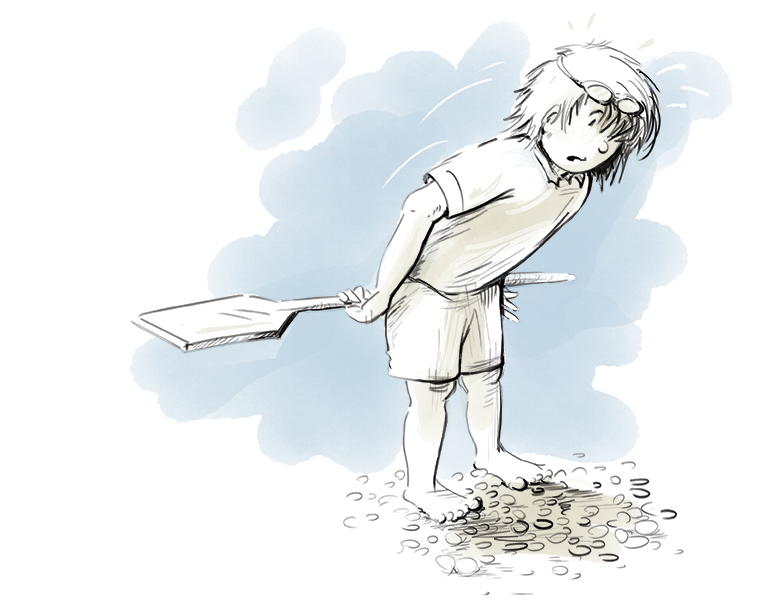
Over the years I remember many a tired plod in all kinds of weathers, and ground conditions, often muddy. By focusing on Dad’s reassuring boot prints, I would keep going and think about the impact we were leaving as we walked.
The character of Colin in the story was inspired by local artist Colin Bentley, whose paintings of the Jurassic Coast illustrate how amazing and special the cliffs are. Colin takes his inspiration from being out in the water, often early in the morning as the sun as rising – hence his paddleboard arrival on the beach, the opening scene of the story.
When I first saw the trace fossil footprint in Sidmouth Museum, I felt such a powerful connection to it, this momentary step upon the earth’s surface but something that remained set in stone millions of years later.
I thought about how individually and collectively, as people, we leave far more than a single footprint during our brief time on this planet.
I decided to try and write a story for children of environmental awareness that spanned the shifting sands of time.
If it’s enjoyed by children reading it and they learn to treat our world with more care, at the very least not dropping rubbish, I feel that would be something positive about my own footprint I leave behind.
The illustrations are a hugely important part of the story. They were done by Mark Hannon, a Westcountry based artist and graphic designer. We’ve worked together on two previous children’s stories ‘Tuamor the Turtle’ and ‘Archie Space Dog!’ Mark has a wonderful talent in interpreting the way I write, so both pictures and words tell the story together.
Thanks to everyone who’s contributed, especially to Rob, in finding the footprint he gave us an insight to our wonderful world.
I hope this story makes you think.
Colin Bentley’s website is www.colinbentley.com
For ‘Tuamor the Turtle’ go to www.tuamortheturtle.com and ‘Archie Space Dog’ go to www.archiespacedog.wordpress.com